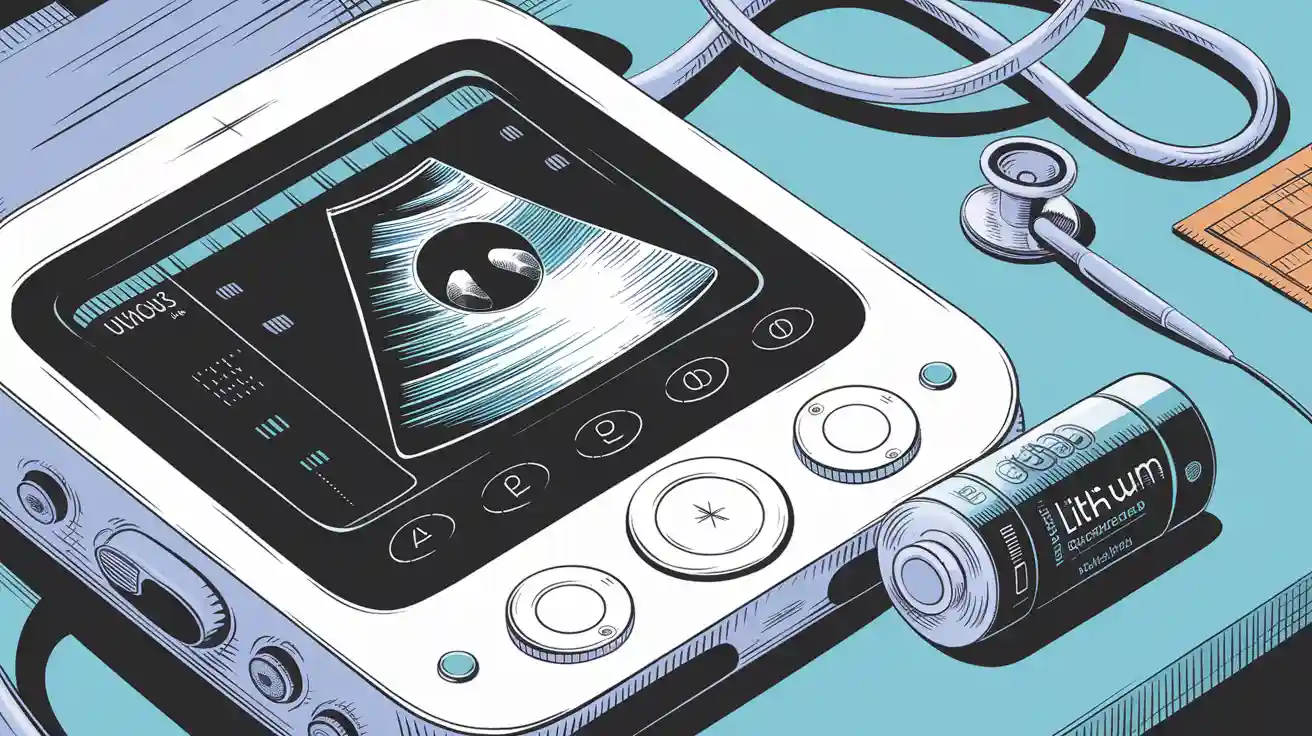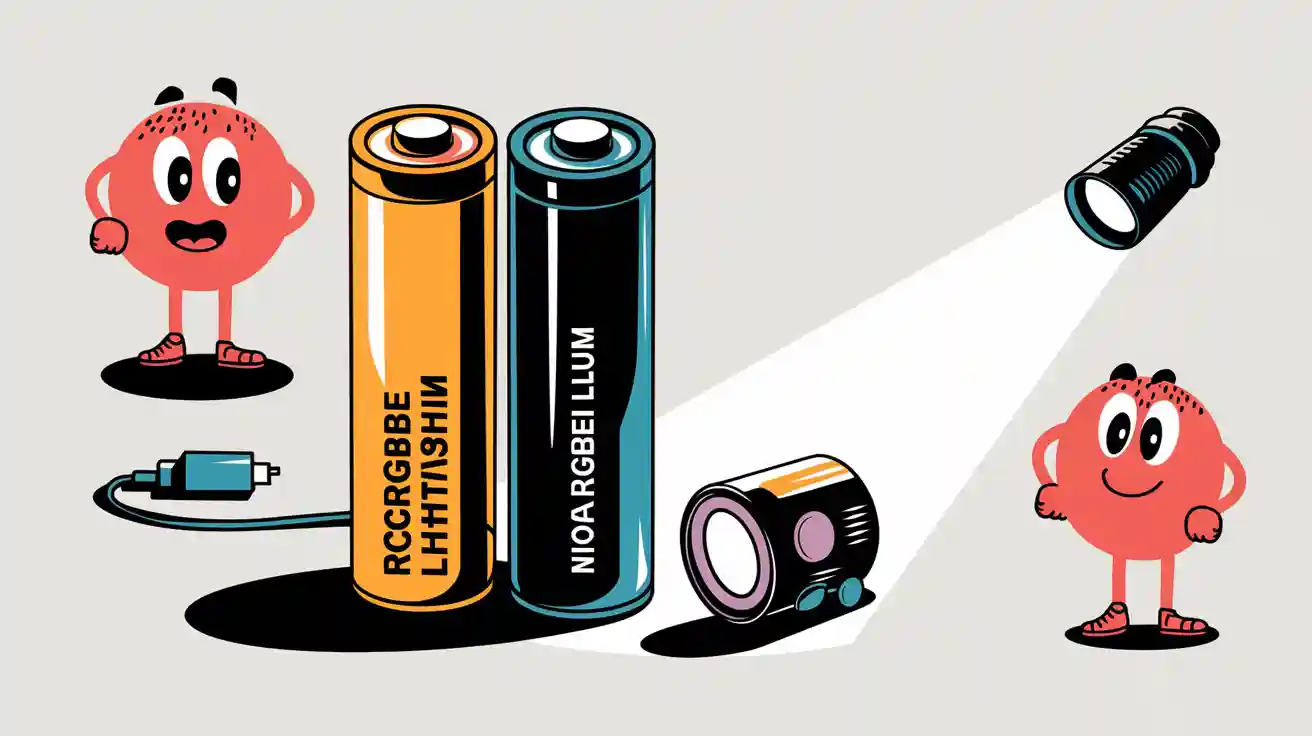Contents

Lithium-ion batteries have revolutionized patient monitors and lithium battery systems by offering unmatched energy density and reliability. These batteries power over 70% of newly manufactured medical devices, ensuring consistent performance and superior portability. Their advanced predictive maintenance models help estimate remaining useful life, reducing battery failure risks and enhancing patient safety. With an energy density of up to 270 Wh/kg, they outperform older technologies like NiMH, making them the preferred choice for portable patient monitors and lithium battery applications.
Key Takeaways
-
Lithium-ion batteries store lots of energy, making devices small and easy to carry for better patient monitoring.
-
These batteries last 15-20 years, cutting costs and lowering maintenance work for hospitals.
-
Built-in safety features make lithium-ion batteries dependable in important healthcare settings, keeping patients safe.
Part 1: Key Features of Lithium-Ion Batteries for Medical Devices
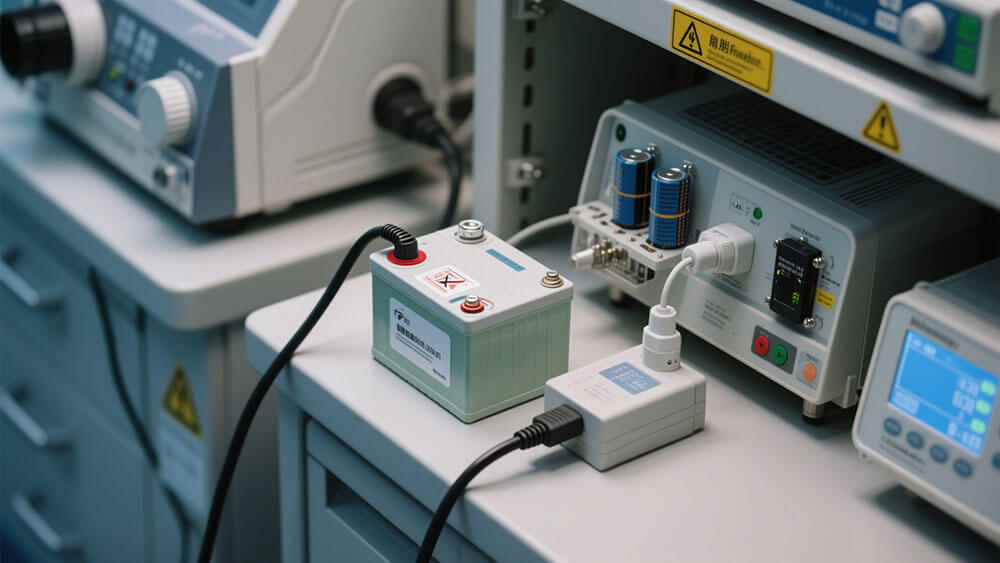
1.1 High Energy Density for Compact Medical Devices
Lithium-ion batteries stand out due to their exceptional energy density, which can reach up to 270 Wh/kg. This feature allows you to power compact medical devices without compromising performance. For patient monitors, this means smaller, lighter designs that are easier to transport and handle in critical healthcare environments. High energy density also ensures that these rechargeable batteries can support advanced functionalities, such as continuous monitoring and wireless connectivity, without frequent recharging. By choosing lithium-ion batteries, you can achieve a balance between portability and functionality, which is essential for modern medical applications.
1.2 Long Lifespan Reducing Replacement Costs
The long lifespan of lithium-ion batteries significantly reduces replacement costs, making them a cost-effective choice for medical devices. These batteries typically last 15-20 years, far outpacing alternatives like VRLA or pure lead batteries, which require replacement every 3-5 years.
|
Battery Type |
Lifespan |
Replacement Frequency |
|---|---|---|
|
Lithium-Ion |
15-20 years |
No replacements needed |
|
Wet Cell VLA & VRLA |
Up to 15 years |
Every 3-5 years |
|
Pure Lead |
Up to 7 years |
Every 3-5 years |
|
VRLA |
3-5 years |
Every 3-5 years |
This extended lifespan not only lowers the total cost of ownership but also minimizes downtime for maintenance. For healthcare providers, this translates to uninterrupted patient care and fewer disruptions in critical operations. Additionally, lithium-ion batteries offer over a 65% reduction in total cost of ownership compared to traditional options, thanks to their durability and low maintenance requirements.
1.3 Advanced Safety Mechanisms for Healthcare Environments
Safety is paramount in healthcare settings, and lithium-ion batteries excel in this area. These batteries incorporate advanced safety mechanisms, such as built-in Battery Management Systems (BMS), to prevent overcharging, overheating, and short circuits. This ensures reliable battery performance even in high-stress environments like intensive care units.
Tip: A robust BMS not only enhances safety but also optimizes battery efficiency, extending its lifespan and ensuring consistent power delivery. Learn more about BMS technology here.
By using lithium-ion batteries, you can ensure compliance with stringent medical safety standards while providing dependable power for life-saving equipment.
1.4 Lightweight Design Enhancing Portability
The lightweight design of lithium-ion batteries is another critical advantage for medical devices. These batteries weigh significantly less than traditional options like lead-acid batteries, making them ideal for portable patient monitors. For example, a lithium-ion battery can weigh up to 50% less than its lead-acid counterpart while delivering the same or even better performance.
This reduced weight enhances the portability of medical devices, allowing healthcare professionals to easily transport equipment between rooms or facilities. Whether it’s for emergency response teams or home healthcare providers, the lightweight nature of lithium-ion batteries ensures that you can deliver care wherever it’s needed.
Part 2: Comparison with Other Battery Types
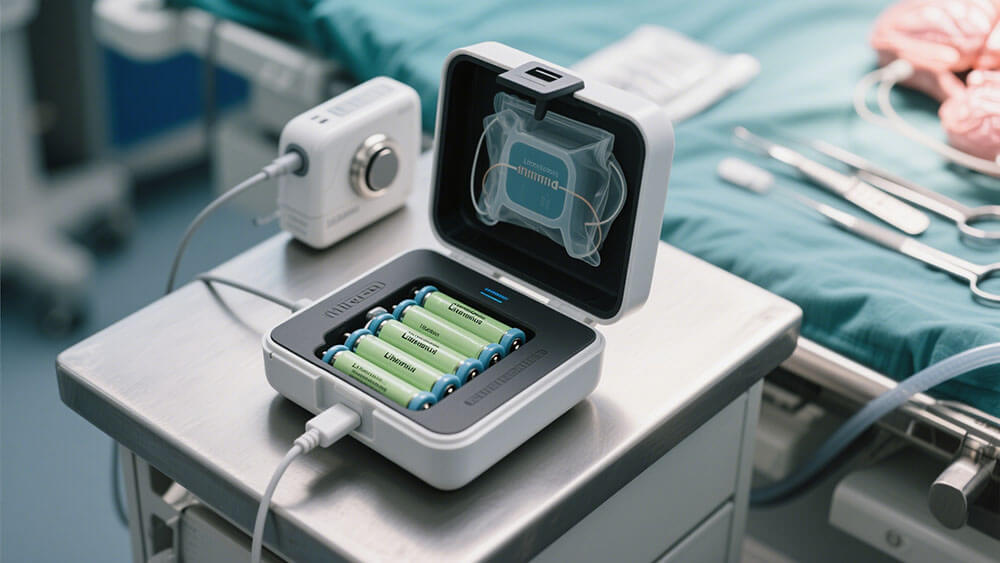
2.1 Patient Monitors and Lithium Battery: Lithium-Ion vs. Lead-Acid
When comparing lithium-ion batteries with lead-acid batteries for patient monitors, the differences are striking. Lead-acid batteries, though historically popular, fall short in several critical areas. They are heavier, bulkier, and less efficient, making them unsuitable for modern, portable medical devices.
Lithium-ion batteries, on the other hand, offer superior energy density, which allows you to power compact devices without sacrificing performance. They also have a significantly longer lifespan, often exceeding 15 years, compared to the 3-5 years typical of lead-acid batteries. This reduces the total cost of ownership and minimizes the need for frequent replacements.
|
Feature |
Lead-Acid Batteries |
Lithium-Ion Batteries |
|---|---|---|
|
Energy Density |
30-50 Wh/kg |
60-270 Wh/kg |
|
Lifespan |
3-5 years |
15+ years |
|
Weight |
Heavy |
Lightweight |
|
Maintenance Cost |
High |
Low |
For patient monitors, the lightweight and maintenance-free nature of lithium-ion batteries make them the clear choice.
2.2 Lithium-Ion Batteries vs. NiMH Batteries
NiMH batteries, while an improvement over older NiCd batteries, cannot match the performance of lithium-ion batteries in medical applications. Their lower energy density and higher self-discharge rates make them less efficient for devices requiring continuous power, such as patient monitors.
|
Metric |
Lithium-Ion Batteries |
NiMH Batteries |
|---|---|---|
|
Energy Density |
2-3 times higher |
Lower |
|
Self-Discharge Rate |
2-3% per month |
15-30% per month |
|
Lifespan |
Up to 2000 cycles |
500-1000 cycles |
|
Weight |
Lighter |
Heavier |
Lithium-ion batteries also maintain a stable voltage during discharge, ensuring consistent battery performance. This stability is crucial for patient monitors, where power interruptions can compromise patient safety.
Note: Lithium-ion batteries dominate the medical battery market due to their superior energy density and extended lifespan.
2.3 Cost-Effectiveness and Charging Efficiency
Lithium-ion batteries excel in cost-effectiveness and charging efficiency. Their high round-trip efficiency (85%) and long lifespan significantly reduce operational costs. Unlike lead-acid or NiMH batteries, lithium-ion batteries require minimal maintenance, further lowering expenses.
|
Scenario Type |
Cost Reduction Projection |
Round-Trip Efficiency |
|---|---|---|
|
Conservative Innovation |
5.8% from 2030 to 2050 |
85% |
|
Moderate Innovation |
Median projection |
85% |
|
Advanced Innovation |
Lowest cost projection |
85% |
The fast charging capability of lithium-ion batteries ensures that patient monitors remain operational with minimal downtime. This efficiency, combined with their durability, makes them the most cost-effective choice for healthcare environments.
Part 3: Benefits for Patient Monitoring Systems
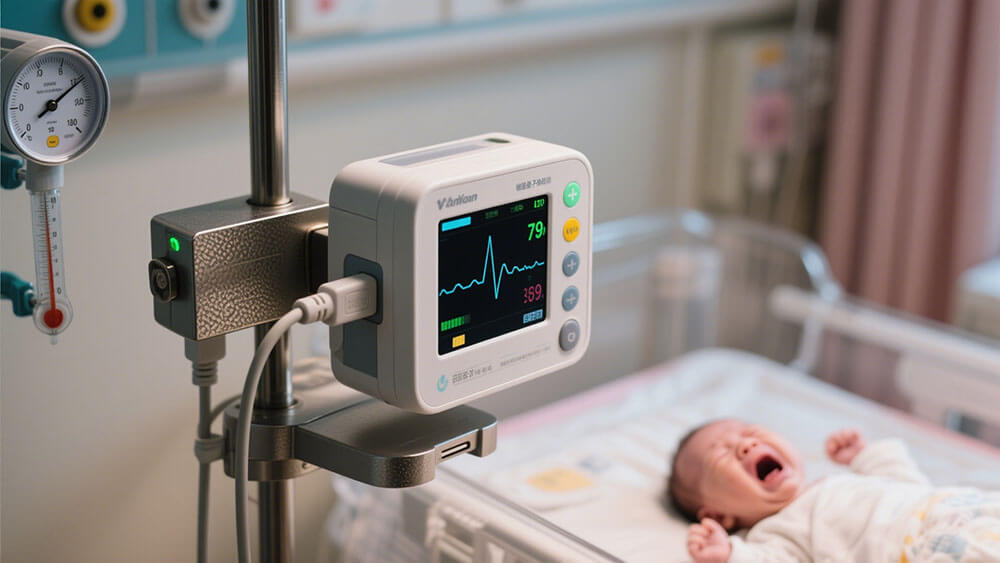
3.1 Reliable Power for Continuous Monitoring
Patient monitoring systems demand uninterrupted power to ensure accurate and consistent data collection. Lithium-ion batteries excel in providing reliable power due to their stable voltage output and high energy density. These features allow patient monitors to operate continuously without performance fluctuations, even during extended use.
Unlike traditional rechargeable batteries, lithium-ion batteries maintain their efficiency over thousands of charge cycles. This reliability minimizes the risk of power interruptions, which is critical in healthcare environments where patient safety depends on consistent monitoring. For example, in intensive care units, these batteries ensure that vital signs are tracked without disruption, enabling timely medical interventions.
Tip: To further enhance reliability, consider integrating a Battery Management System (BMS) with lithium-ion batteries.
3.2 Compact Size for Portable Patient Monitors
The compact size of lithium-ion batteries is a game-changer for portable patient monitors. Their high energy density allows manufacturers to design smaller and lighter devices without compromising functionality. This portability is essential for healthcare professionals who need to transport monitors between rooms or facilities quickly.
For instance, emergency response teams benefit from lightweight monitors powered by lithium-ion batteries, enabling them to provide care in remote or challenging environments. Additionally, the reduced size of these batteries contributes to ergonomic designs, making devices easier to handle and operate.
|
Feature |
Traditional Batteries |
Lithium-Ion Batteries |
|---|---|---|
|
Weight |
Heavy |
Lightweight |
|
Device Portability |
Limited |
Enhanced |
|
Design Flexibility |
Restricted |
High |
By choosing lithium-ion batteries, you can achieve a balance between portability and performance, ensuring that patient monitors remain efficient and user-friendly.
3.3 Extended Battery Life Reducing Maintenance
Lithium-ion batteries offer an impressive lifespan, often exceeding 15 years, which significantly reduces maintenance requirements. This extended lifespan translates to fewer replacements, lowering the total cost of ownership for healthcare providers.
Frequent battery replacements can disrupt patient care and increase operational costs. Lithium-ion batteries eliminate these challenges by providing long-lasting performance. Their durability ensures that patient monitors remain operational for years, even in demanding healthcare settings.
Note: The long lifespan of lithium-ion batteries also supports sustainability by reducing electronic waste. Learn more about sustainable battery solutions at Large Power.
3.4 Enhanced Performance in Critical Healthcare Settings
In critical healthcare settings, such as operating rooms and emergency departments, performance and reliability are non-negotiable. Lithium-ion batteries deliver consistent power output, ensuring that patient monitors function optimally under high-stress conditions.
These batteries also perform well across a wide temperature range, making them suitable for various medical environments. Whether in a controlled hospital setting or during field operations, lithium-ion batteries provide dependable power. Their advanced safety features, including protection against overcharging and overheating, further enhance their suitability for critical applications.
Call to Action: Looking for customized lithium-ion battery solutions for your medical devices? For customized battery solutions tailored to your business, explore Large Power’s offerings.
Part 4: Real-World Applications
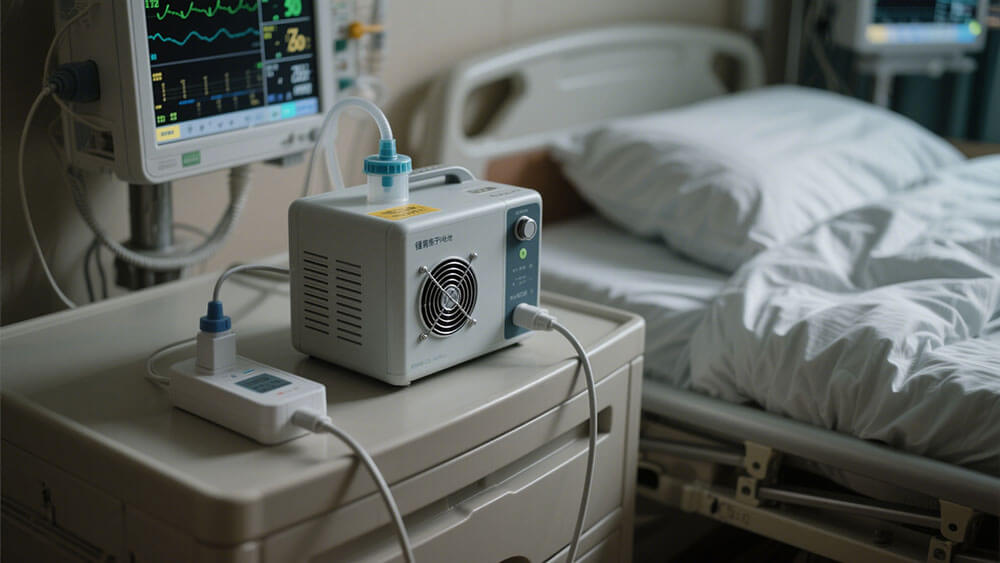
4.1 Lithium-Ion Batteries in Portable Patient Monitors
Portable patient monitors rely heavily on lithium-ion batteries for their compact size and high energy output. These rechargeable batteries enable healthcare professionals to monitor patients’ vital signs in real-time, even in remote or mobile settings. Their lightweight design makes it easier to transport monitors between hospital rooms or during emergency evacuations.
For example, emergency response teams often use portable monitors powered by lithium-ion batteries to provide immediate care in critical situations. The batteries’ ability to deliver consistent power ensures that these devices function reliably, even during extended use. This reliability is crucial for maintaining accurate patient data and supporting timely medical decisions.
4.2 Integration in ICU and Emergency Monitoring Systems
In intensive care units (ICUs) and emergency departments, patient monitors and lithium battery systems must perform flawlessly under high-stress conditions. Lithium-ion batteries excel in these environments due to their advanced safety features and stable power output. They power critical components like sensor modules, ensuring uninterrupted monitoring of vital parameters such as oxygen levels.
This integration enhances the efficiency of ICU and emergency systems, reducing the risk of equipment failure during life-saving procedures. By choosing lithium-ion batteries, you ensure that patient monitors remain operational in the most demanding healthcare settings.
4.3 Use in Telemedicine and Remote Monitoring Devices
Telemedicine and remote monitoring devices depend on lithium-ion batteries for their functionality. These batteries power wearable health monitors and portable medical alert systems, which are essential for managing chronic conditions. Their compact design and high energy density allow these devices to operate efficiently throughout the day without frequent recharging.
The growing demand for telemedicine has increased the need for reliable battery solutions. Lithium-ion batteries support this trend by enabling real-time health metric monitoring, which is vital for patients with conditions like diabetes or hypertension. Innovations in battery technology, such as faster charging and enhanced energy density, further improve the performance of these devices. This makes lithium-ion batteries indispensable for the future of telemedicine and remote healthcare.
Lithium-ion batteries redefine the standards for powering medical equipment. Their high energy density ensures compact designs, while their reliability guarantees uninterrupted power for critical healthcare operations. Studies highlight their role in maintaining operational continuity, especially in sectors requiring stable energy solutions. By prioritizing these batteries, you can enhance patient care and optimize device performance.
FAQ
1. What makes lithium-ion batteries safer for medical devices?
Lithium-ion batteries include advanced safety features like Battery Management Systems (BMS). These prevent overheating, overcharging, and short circuits, ensuring reliable performance in healthcare environments.
2. How do lithium-ion batteries reduce maintenance costs?
Their long lifespan, often exceeding 15 years, minimizes replacement needs. This durability lowers operational costs and reduces disruptions in critical healthcare operations.
3. Why are lithium-ion batteries ideal for portable patient monitors?
Their lightweight design and high energy density allow compact, portable monitors. This enhances mobility, making it easier to transport devices between rooms or facilities.
For customized battery solutions tailored to your business, explore Large Power’s offerings.


